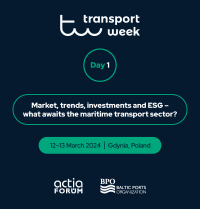When you’re trying to save the world, you can be forgiven for sounding a little tired.
And Boyan Slat, the Dutch wunderkind that exploded onto the environmental stage in 2012 with a TEDx talk on ocean plastic pollution, sounds exhausted.
Speaking over the phone from his base in the Netherlands, he gives the impression he’s just got out of bed when, in reality, he sorely needs to get into it. However, listening to the scale of this 25-year old’s ambitions – the work that needs to be done – it quickly becomes apparent that he doesn’t have the time to sleep.
Because Boyan Slat, as you would expect from a ‘superhero’, is fighting a foe intent on taking over the planet.
A load of rubbish
The 12.7 million tonnes of plastic washed into our oceans every year; the 5 trillion individual pieces currently afloat; the 51 trillion microplastic particles poisoning the marine ecosystem; and the scale of the Great Pacific Garbage Patch, a vast dump of debris off the coast of California that’s twice the size of Texas.
And if you know about the latter you’re probably familiar with Slat. He’s the original Garbage Patch Kid, targeting its collection with his ground-breaking Ocean Cleanup organization – using a huge floating ‘artificial coastline’ to capture and retain plastic for recycling.
It’s simple, it’s effective (the maiden catch brought ashore in Vancouver last December illustrated that), and it’s genius. But, arguably, not as much as his latest launch, which you may not know about, but definitely should.
Everybody should.
It’s called the Interceptor.
Prevention over cure
‘It was always our intention to go to the source of the problem,’ Slat reveals, ‘but the accumulated stock of ocean plastic was such a neglected area that it became the obvious first target. However, in 2015 we thought it was time to take a risk and start the second business line, even before the first was fully operational.
‘So, we began looking at prevention. We began looking at rivers.’
The Ocean Cleanup initiated a study to map where plastic enters our oceans, discovering that around 80% of it originates from the world’s 1000 most polluting rivers (with individual outputs ranging between 0.8 and 2.7 million metric tonnes of waste per annum). The remaining 20 % is deposited by a second tranche of 30,000 water ways.
Slat says this finding hammered home the realization that his first ‘business line’ would be fighting a losing battle if he didn’t ‘turn off the tap’ and stop the plastic at the source.
‘The rivers are the arteries feeding garbage into the ocean,’ he stresses, ‘transporting waste from land to dump at sea. But if we can block those arteries, we bypass the problem. So, we needed a solution for those 1000 rivers.’
And now he has one. One that Ocean Cleanup aims to deploy across all of those 1000 rivers by 2025. If they can get the support.
Going with the flow
Meet the Interceptor. As its name imparts, this solution intercepts river borne rubbish before it escapes to sea, using a ‘barrier’ that is optimized with the river’s natural current to guide waste to a moored collection unit. This is a 24 m long, autonomous catamaran barge with a central conveyor belt to gobble up the garbage flow, feeding it into six dumpsters, with a combined capacity of 50 m³. Powered by solar energy, charging a 20 kwh onboard battery, the system monitors the debris levels, automatically distributing it between the individual bins and using a 4G cloud link to communicate with a land-based support team, who then empty the unit as required. Working at optimal efficiency a single Interceptor can extract up to 100,000 kg of garbage from a river per day, with the conveyor belt capable of carrying 24 kg per second.
That is a colossal amount of crap that would otherwise have ended up choking birds, soiling the sea and entering the aquatic food chain.
It is a stunning idea… if it works.
Leading the way
‘It does!’ retorts reawakened Slat.
‘We’ve already deployed two – the first in Jakarta, Indonesia, and the second on the Klang River, Selangor, in Malaysia. The first has been operating successfully for the past year and the Malaysian model, which is the second generation, was deployed in September 2019. Two more second generation models are currently in production for deployment in Vietnam and the Dominican Republic, while we’re looking to take the third generation from the drawing board to manufacture now. Things are moving fast because they have to.’
He’s not kidding.
To turn off the taps in 1000 rivers in five years seems startlingly ambitious, but then this is the same guy that launched his original clean-up concept to the world at the age of 16, winning the coveted Nor-Shipping Young Entrepreneur Award (aimed at rising maritime stars aged under 40) just two years later. He seems to thrive on challenge.
Which is lucky, considering what lies ahead.
‘That is really what the world needs to see in, and for, our oceans – action!’ he says. ‘Plastic is only one part of the environmental jigsaw, but it’s an essential one and we must tackle it as soon as possible to minimize damage and allow the oceans to breathe. It’s an issue for the wellbeing of our planet and society, but it also has immediate impacts on industry.
‘For example, when we were out in the Pacific a discarded net from the garbage patch wrapped around the propeller of our 35 m anchor handling vessel, bringing the engine to an abrupt halt. This is an obvious vessel safety issue and will only get worse if the pollution grows. So, it’s in maritime’s interest to act now too. We need your support. We need to work together to solve this.’
Even superheroes, it seems, can’t save the world alone…
Prepared by information Nor-Shipping










